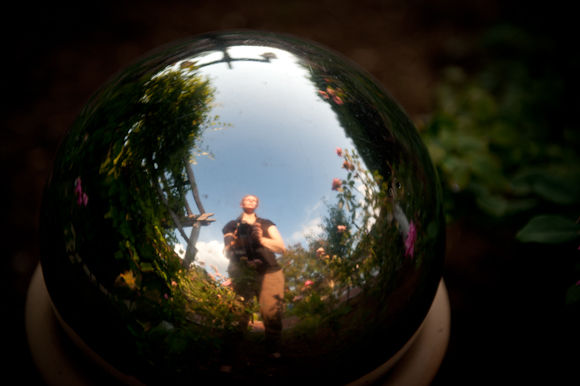Literacy Through Photography Workshop
This self portrait was taken after an intense experience this summer that caused me to reflect on photography’s influence in my life. I re-engaged with photography in 2008 and had no idea where it would take me. Initially I viewed it as a tool for documenting families, events, etc. I have come to view photography as a means of visual communication, a way to explore and express ideas as well as exercise creativity. And for me, creativity is almost as essential as air. I still don’t know where this journey will take me, and I am often frustrated with the pace of my progress. But I am amazed at how this tool and art are expanding my world.
In August I flew to Durham, NC to attend a workshop on Literacy Through Photography (“LTP”) at The Center for Documentary Studies at Duke University. The workshop was transforming for me. LTP was developed by Wendy Ewald, the photographer I researched in my History of Photography class. It is a philosophy and methodology for teaching photography which integrates writing in the creation process. Writing is used as a way to develop a concept and plan its visual representation. Simple and straight forward to apply, LTP is also amazing in its breadth and depth of application.
As I have studied photography I have often been asked to think about what I want to say with my work and let that guide my image creation. But very few instructors or assignments have taught me HOW to do that. Based on my experience as an art docent, this aspect of art is not recognized in elementary school art education in our school district. But I feel this is what turns an art project into visual communication and creative exploration into an exercise in critical thinking. LTP teaches photography in a way that focuses on these skills.
I don’t know if a summary of the workshop will do justice to the experience, but it seems better than a ramble of praises. We started out with some exercises for teaching how to read a photograph and how to talk about framing. We then read and analyzed a poem, practiced picking out visual elements in the writing and sketched ideas for representing those concepts. This prepared us for two projects. The first was a self portrait project using a memory map which involved the following steps:
1. Draw an illustration or map of the first home we remember. (10 min.)
2. Think about memories in that home and mark locations on the “map” where they occurred. (10 min.)
3. Choose one of those memories and write about it in as much detail as we can remember. (10 min.)
4. Work with a partner and brainstorm 4-5 different ways to represent each person’s memory in a photograph. Then, using inexpensive point-and-shoot cameras provided, help each other create those images.
5. Print 4-5 of the created images. Choose one and swap with a person other than our partner. Write about the other person’s image as if it was our own memory. (10 min.)
It was a powerful process. In part because it was extremely challenging. It required improvising, and being creative with available resources. I was surprised by how much I enjoyed the preparatory exploration of memories and how I found working with low tech tools to be somewhat liberating. While I am not crazy about my resulting images for this assignment, and feel they are too personal to share, I wanted to share the process. I think it would be an interesting method to apply to writing a personal history.
In the next exercise, we worked in groups of 4 people to create an Alphabet Project. The assignment was to choose words associated with the general topic of Identity. Each group was given a portion of the alphabet, discussed their approach to the general topic, brainstormed and selected words for each letter, then created images for each word. Our group chose to focus on labels. We passed the camera around, alternating acting as photographer, model, and coach. It was a lot of fun to work collaboratively. Here are my two favorite images created by our group.
The “Klutz” image makes me chuckle. It is rather difficult to feign bumping into something or tripping, but after many attempts, this image worked.
At the end of the day, each group printed and labeled images and displayed them in order around the room. We each then chose one image to respond to by writing a memory, poem, definition, or anything else. I chose to write about this image created by another group, and have also included my writing.
I spent time my last evening in Durham in the courtyard of the place I stayed pondering my experience and capturing images. The beginning self portrait above is one of them. Here are a few others that reflect my thoughts and feelings about the workshop, Durham in general, and the role of photography in my life.
Since returning, I have called many people to explore options for getting LTP into our school district, where I feel art is viewed as a creative outlet, like a craft or a hobby, not recognized as a tool for developing creative and critical thinking skills. It will take time and persistence to get it in the schools. I hope I am up to the task.
If you are interested in learning more about LTP, I recommend these books:
I Wanna Take Me a Picture: Teaching Writing and Photography to Children by Wendy Ewald and Alexandra Lightfoot
Literacy & Justice Through Photography by Wendy Ewald, Katherine Hyde and Lisa Lord



Recent Comments